LS190 Gloss Meter
Affordable and economic gloss meter
One movement, one result. Easy to operate
Support QC mode to improve measurement efficiency
Conform to Chinese Grade 2 working machine standards
Parameters
| Parameter | Value |
|---|---|
| Measuring Angle | 60° |
| Measuring Aperture | 9mm*15mm |
| Minimum Test Material Size | 20mm*10mm |
| Measuring Range | 0-200GU |
| Resolution | 1GU |
| Repeatability | 0-100GU:±1GU 100-200GU:±1% |
| Reproducibility | 0-100GU:±1GU 100-200GU:±1% |
| Zero Error | 1GU |
| Indication Error | 0-100GU:±3GU 100-1000GU:±3% |
| Power Supply | Lithium rechargeable battery 3.7V@650mAh |
| Display | 240×128 Dot Matrix |
| Language | Simplified Chinese, English |
| Charge Port | USB(Type-C) |
| Data Transmission | USB |
| Size | 140*48*75mm |
| Weight | About 237g |
| Working Temperature | 10~45℃,0~85%RH (no condensation) |
| Storage Temperature | -10~60℃, 0~85%RH (no condensation) |
LS192 Gloss Meter
In line with Chinese Grade 1 gloss meter standard
Universal angle 60°, large range up to 1000GU
Provide free PC software
Automatically judge whether the data is qualified in QC mode
Parameters
| Parameter | Value |
|---|---|
| Measure angle | 60° |
| Measuring aperture | 9mm*15mm |
| Minimum test material size | 20mm*10mm |
| Test Range | 0-1000GU |
| Resolution | 0.1GU |
| Repeatability | 0-100GU:±0.2GU 100-1000GU:±0.2% |
| Reproducibility | 0-100GU:±0.5GU; 100-1000GU:±0.5% |
| Zero error | 0.1GU |
| Error of indication | 0-100GU:±1.5GU 100-1000GU:±1.5% |
| Battery capacity | rechargeable lithium3.7V@1000mAh |
| Display | 192×64 |
| System language | Chinese(Simplified), English |
| Charging interface | USB(Type-C) |
| Data Interface | USB |
| Size | 102*35*51mm |
| Weight | About 300g |
| Working temperature | 10~45℃,0~85%RH(no drew) |
| Storage temperature | -10~60℃,0~85%RH(no drew) |
LS193 gloss meter with micro measuring aperture
Measuring aperture: 3mm*6mm
Universal angle 60°, measuring range: 0-1000GU
In line with requirement of Chinese Grade 1 gloss meter standard GB/T 9754
Parameters
| Parameter | Value |
|---|---|
| Measure angle | 60° |
| Measuring aperture | 1.5mm*3mm |
| Minimum Testing material size | 3mm*6mm |
| Test Range | 0-1000GU |
| Resolution | 0.1GU |
| Repeatability | 0-100GU:±0.2GU 100-1000GU:±0.2% |
| Reproducibility | 0-100GU:±0.5GU 100-1000GU:±0.5% |
| Zero error | 0.1GU |
| Error of indication | 0-100GU:±1.5GU 100-1000GU:±1.5% |
| Battery capacity | rechargeable lithium3.7V@1000mAh |
| Display | 192×64 |
| System Language | Chinese(Simplified), English |
| Charging interface | USB(Type-C) |
| Data Interface | USB |
LS195 Gloss Meter
Put and test, easy to operate
Support QC mode to improve measurement efficiency
High precision, and conform to Chinese Grade 1 gloss meter standards
Parameters
| Parameter | Value |
|---|---|
| Measuring Angle | 60° |
| Measuring Aperture | 9mm*15mm |
| Minimum Test Material Size | 20mm*10mm |
| Measuring Range | 0-200GU |
| Resolution | 0.1GU |
| Repeatability | 0-100GU:±0.2GU 100-200GU:±0.2% |
| Reproducibility | 0-100GU:±0.5GU 100-200GU:±0.5% |
| Zero Error | 0.1GU |
| Indication Error | 0-100GU:±1.5GU 100-200GU:±1.5% |
| Power Supply | Lithium rechargeable battery 3.7V@650mAh |
| Display | 240×128 Dot Matrix |
| Language | Simplified Chinese, English |
| Charge Port | USB(Type-C) |
| Data Transmission | USB |
LS197 Gloss Meter
LS196 is a handheld gloss meter. Thanks to its ivory white engineering housing, its appearance is simple and generous. It features 60° universal angle design, and its measuring range can reach to 1000GU. The device supports normal mode and QC mode. In QC mode, it can automatically determine whether the gloss of the material is qualified, thus the measurement efficiency is improved. It is professionally used for the surface gloss measurement of paints, coatings, inks, plastics, ceramics, stones, metals and other materials.
Multi-angles, large range, high precision
Parameter
| Parameter | Value |
|---|---|
| Measuring Angle | 60° |
| Measuring Aperture | 9mm*15mm |
| Minimum Test Material Size | 20mm*10mm |
| Measuring Range | 0-1000GU |
| Resolution | 0.1GU |
| Repeatability | 0-100GU:±0.2GU 100-1000GU:±0.2% |
| Reproducibility | 0-100GU:±0.5GU 100-1000GU:±0.5% |
| Zero Error | 0.1GU |
| Indication Error | 0-100GU:±1.5GU 100-1000GU:±1.5% |
| Power Supply | Lithium rechargeable battery 3.7V@650mAh |
| Display | 240×128 Dot Matrix |
| Language | Simplified Chinese, English |
| Charge Port | USB(Type-C) |
| Data Transmission | USB |
| Size | 140*48*75mm |
| Weight | About 237g |
| Working Temperature | 10~45℃,0~85%RH (no condensation) |
| Storage Temperature | -10~60℃,0~85%RH (no condensation) |
LS197 Gloss Meter
Multi-angles, large range, high precision
20°/60°/85° multi-angle measurement modes
2000GU large measuring range
High precision, and conforms to Chinese Grade 1 gloss meter standards
LS197 is a multi-angle designed gloss meter. Thanks to its ivory white engineering housing, its appearance is simple and generous. It has 3 measuring angles of 20°, 60° and 85°, so that the gloss at different angles can be measured at the same time. With its 2000GU measuring range, the device can measure materials with high gloss and even specular reflectivity. The device supports normal mode and QC mode. In normal mode, all you need to do is put the gloss meter on the sample whose gloss will be displayed on the screen of the device instantly. No need to wait. In QC mode, it can automatically determine whether the gloss of the material is qualified, thus the measurement efficiency is improved. The device is widely used for the surface gloss measurement of paints, coatings, inks, plastics, ceramics, paper, stones, metals and other materials.
Parameter
| Parameter | Value |
|---|---|
| Measuring Angle | 20°, 60°, 85° |
| Measuring Aperture | 20°: 9mm*9mm 60°: 9mm*15mm 85°: 5mm*38mm |
| Minimum Test Material Size | 57mm*10mm |
| Measuring Range | 20°: 0-2000GU 60°: 0-1000GU 85°: 0-160GU |
| Resolution | 0.1GU |
| Repeatability | 0-100GU:±0.2GU 100-2000GU:±0.2% |
| Reproducibility | 0-100GU:±0.5GU 100-2000GU:±0.5% |
| Zero Error | 0.1GU |
| Indication Error | 0-100GU:±1.5GU 100-2000GU:±1.5% |
| Power Supply | Lithium rechargeable battery 3.7V@2000mAh |
| Display | 240×128 Dot Matrix |
| Language | Simplified Chinese, English |
| Charge Port | USB(Type-C) |
| Data Transmission | USB |
| Size | 140*48*75mm |
| Weight | About 300g |
| Working Temperature | 10~45℃, 0~85%RH (no condensation) |
| Storage Temperature | -10~60℃, 0~85%RH (no condensation) |
I. What is gloss meter?
A gloss meter (glossmeter) is an glossiness measurement euipment which is used to measure the specular reflection (gloss) on the object surface. It can measure the gloss of materials such as paint, automotive, marble, printing paper, plastics, ceramic, stone, bamboo, leather and many other materials. Gloss testers provide quantifiable glossiness measurements, expressed in gloss units (GU).
II. How to use a gloss meter?
Many people is concerned about how to operate a gloss meter. Simple operation would benefit lots of users. The method of using different gloss meters will be different. If the instrument has too many buttons and requires cumbersome settings, it is relatively complicated for non-professionals to use. Using Linshang 60° gloss meter of portable size, we can complete the specular reflection gloss measurement with single hand.
III. How does the gloss meter work?
The gloss meter contains a light source, a screen, a receiver as well as a display screen. The measurement principle is shown in the figure below.
Principle of the gloss meter
The gloss meter usually has various test angles. This angle refers to the occurrence light and the line perpendicular to the plane. Typical geometric angles of 20 degree, 60 degree and also 85 degree. Under the specified light source and geometric angle, a beam of light is irradiated onto the measured object surface. Then the ratio of the luminous flux reflected back from the object surface to the light flux reflected by the standard board multiplied by 100 is the measured object gloss. (The standard board adopt the perfect polished black glass with a refractive index of 1.567 and a gloss of 100)
IV. Tips about choosing gloss meter
| Model | Measuring Angle | Measuring Range | Minimum Test Material size |
| LS190 | 60° | 0-200GU | 20mm*10mm |
| LS192 | 60° | 0-1000GU | 20mm*10mm |
| LS193 | 60° | 0-1000GU | 3mm*6mm |
| LS195 | 60° | 0-200GU | 20mm*10mm |
| LS196 | 60° | 0-1000GU | 20mm*10mm |
| LS197 | 20°, 60°, 85° | 20°: 0-2000GU
60°: 0-1000GU 85°: 0-160GU |
57mm*10mm |
1. Gloss meter measurement accuracy
There are three grades of gloss meters: standard gloss meter, first-grade working gloss meter and second-grade working gloss meter. The high-precision gloss tester can meet the standards of first-class working gloss meter. And the reproducibility of the instrument (for multiple tests under the same test conditions of one instrument, the data is stable) and the repeatability (for multiple tests of the same batch of instruments under the same test conditions, the data is consistent) are very good. Linshang gloss meter meets the Chinese national standard of first-class working gloss meters.
2. Gloss meter functions
Gloss meters of different brands are different. The function can be selected according to your actual need.Several functions are important in selecting gloss meter, we will list these functions in the following part:
2.1 High precision
Gloss tester precision plays a significant role in gloss measurement. High precision means that measure the same test material, the measured data will not exceed the accuracy of the gloss meter. (Different gloss meters have different measurement accuracy).
2.2 For quality controle
The gloss meter support switch between normal mode and QC mode, applicable to different scenes. Normal mode: quick reading after put and test; QC mode: realize quick check on incoming material by setting upper and lower limit value and judge “Pass” or not.
2.3 Power-on self-inspection
Not all the gloss detectors have this function. Linshang gloss meter with the power-on self-inspection function can automatically judge whether the standard board is contaminated and give a prompt to avoid inaccurate measurement caused by the standard board contamination affecting the standard value.
2.4 Other functions
Besides these functions, other functions are also quite useful. Linshang gloss checker has small size and is easy to carry. The Linshang glossmeter also provides free PC software and has stable data.
V. 60 degree gloss meter analysis
As shown in the figure above, the specular reflection ability of low-gloss materials is weak.
If a 20-degree angle gloss meter is used for measurement, the light flux received by the detector is very weak after being reflected by the material surface. The data is small comparing with the light reflected by black glass. When measuring low-gloss materials with different gloss levels, the measured value changes a little. The resolution is not accurate enough to distinguish the subtle glossiness differences.
Similarly, if the 85 degree gloss meter is used to measure high gloss materials, the resolution is not accurate enough to distinguish the glossiness differenc too. Therefore, it is recommended to choose 85 degree gloss meter for low gloss materials and 20 degree gloss meter for high gloss materials. If you need to measure the materials with medium gloss, you can choose 60 ° gloss meter and 60 degree angle gloss meter performs better when measuring the surface of high gloss and low gloss materials.
It can be seen from the curves of the three different angle gloss meters measuring different gloss materials: 60-degree angle glossmeters are better than 85-degree glossmeters when measuring high-gloss materials and better than 20-degree gloss when measuring low-gloss materials.
Most 60 degree gloss meters have a test range of 200GU, so 60 degree gloss meters are suitable for testing the surface gloss of most materials. Take the Linshang gloss meter as an example, with a universal angle of 60 °, a gloss measurement range of 200GU and1000GU and a resolution of 0.1GU. In this way, no matter the high gloss or low gloss material can be tested, there is enough resolution to distinguish the difference in gloss of different materials. There is also a large enough range to meet the test requirements of high gloss materials.
Linshang gloss meter is very popular in the market because of its ultra-high precision and good repeatability and reproducibility. If you want to know more about how to choose a suitable gloss meter, please refer to: “How to Measure Gloss with A Gloss Meter? “.
| Thương hiệu | |
|---|---|
| Xuất xứ |
Related products
Máy đo độ truyền ánh sáng / Light Transmittance Meter
Máy đo độ truyền ánh sáng / Light Transmittance Meter
Thiết bị đo năng lượng UV
Quang phổ đo độ tạo màu



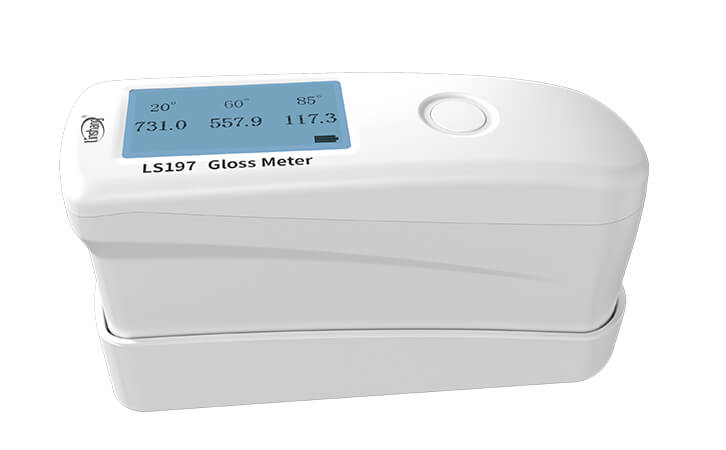




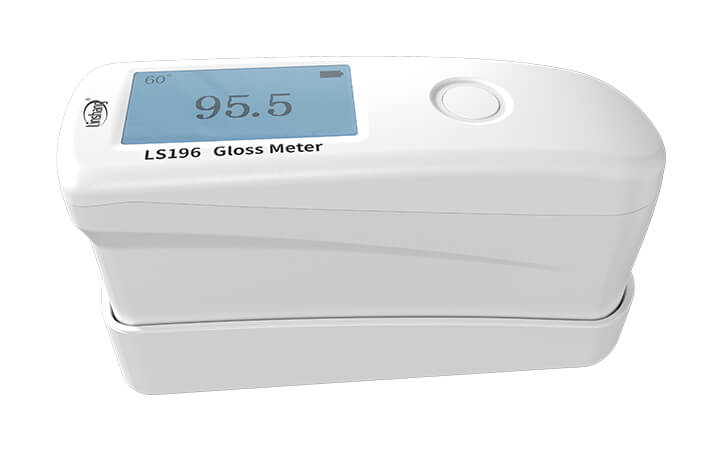
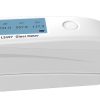
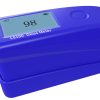

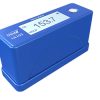
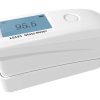
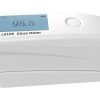
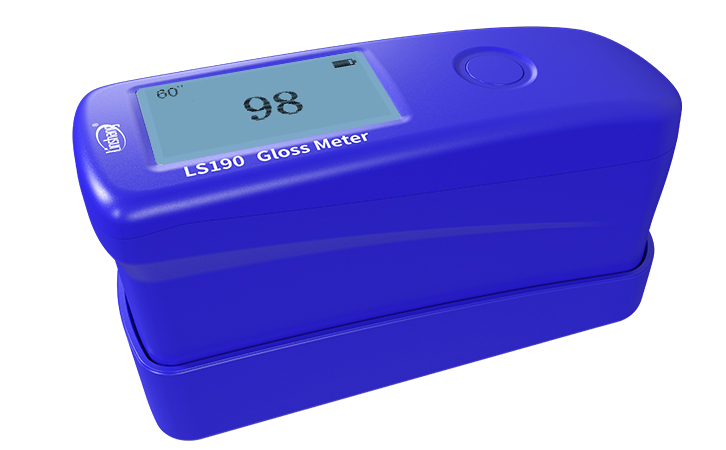
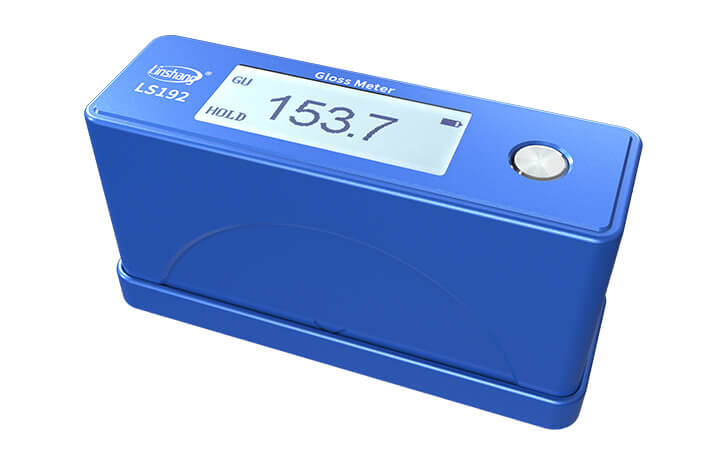



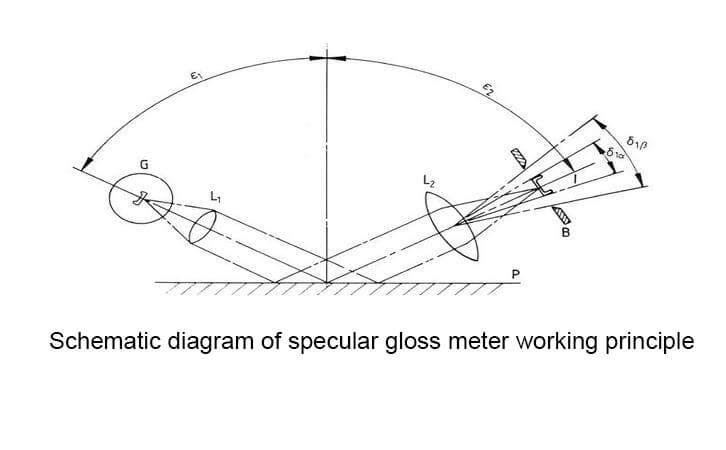
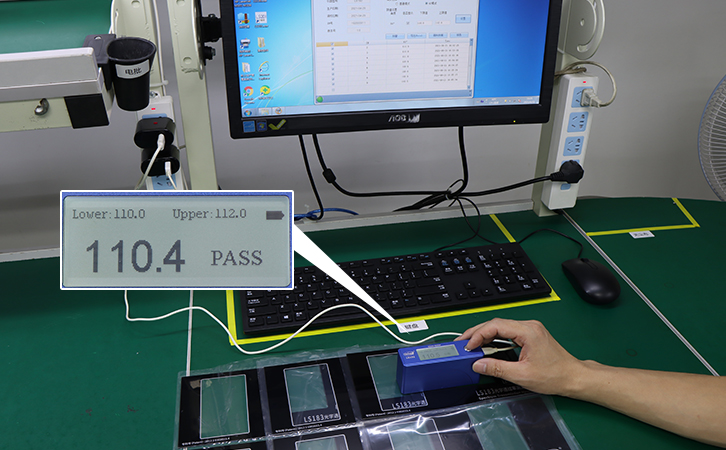
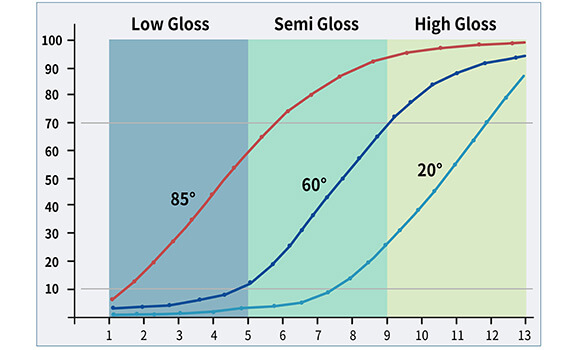
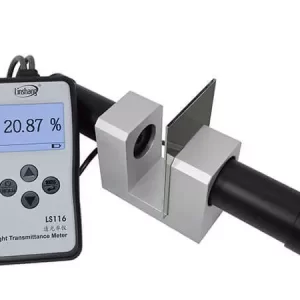

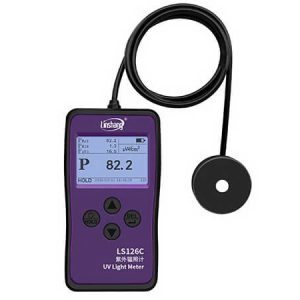
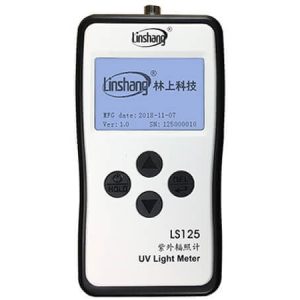
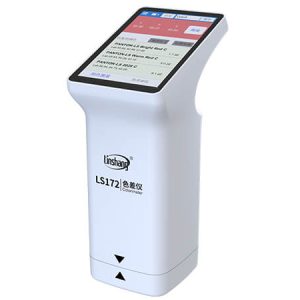
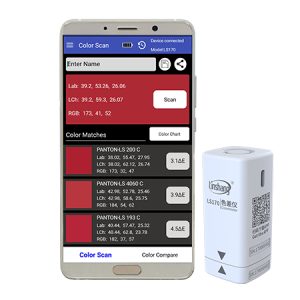





Reviews
There are no reviews yet.